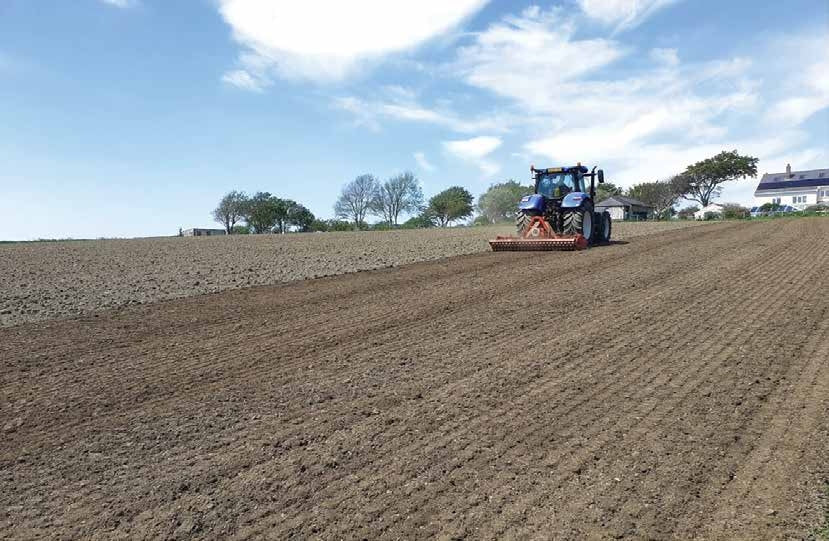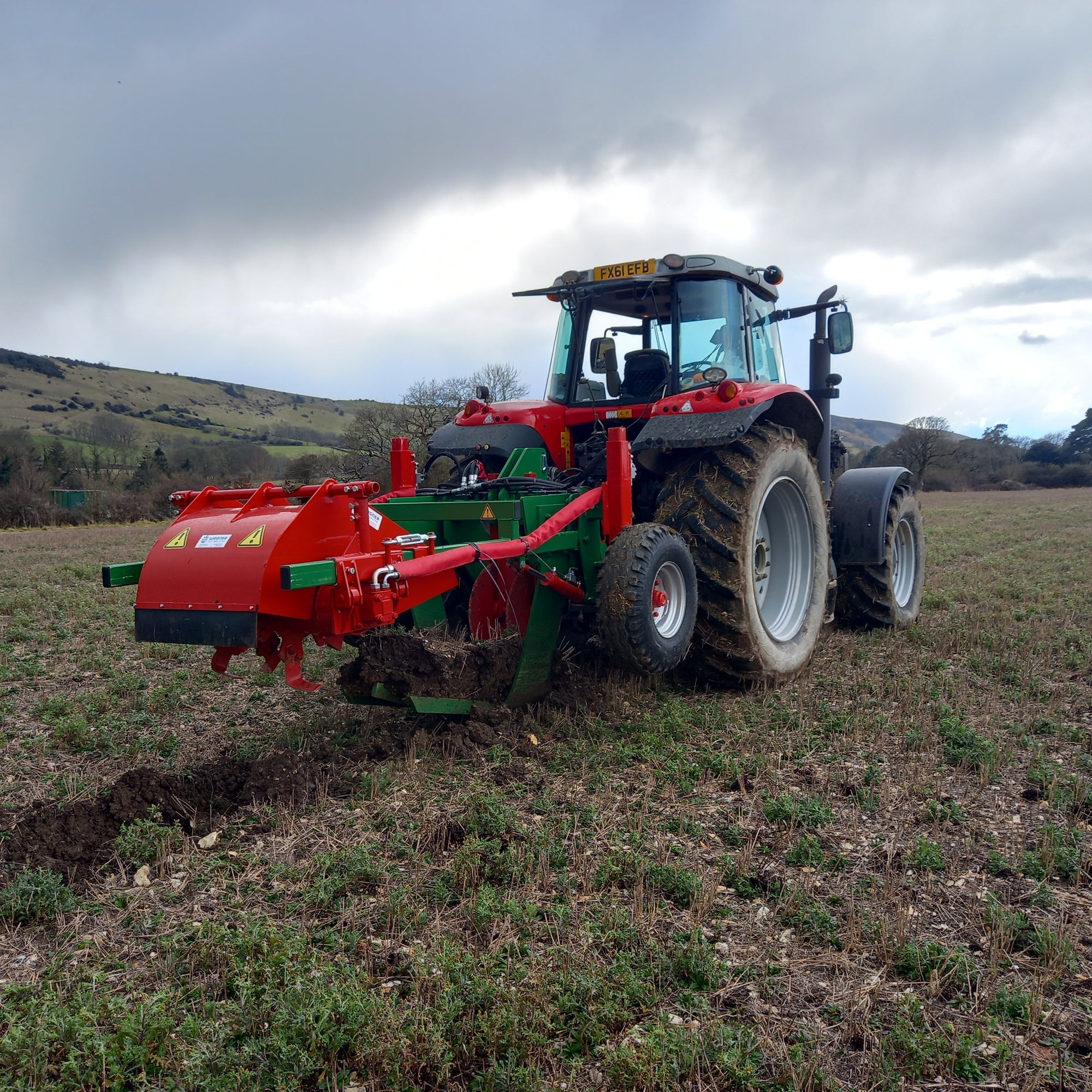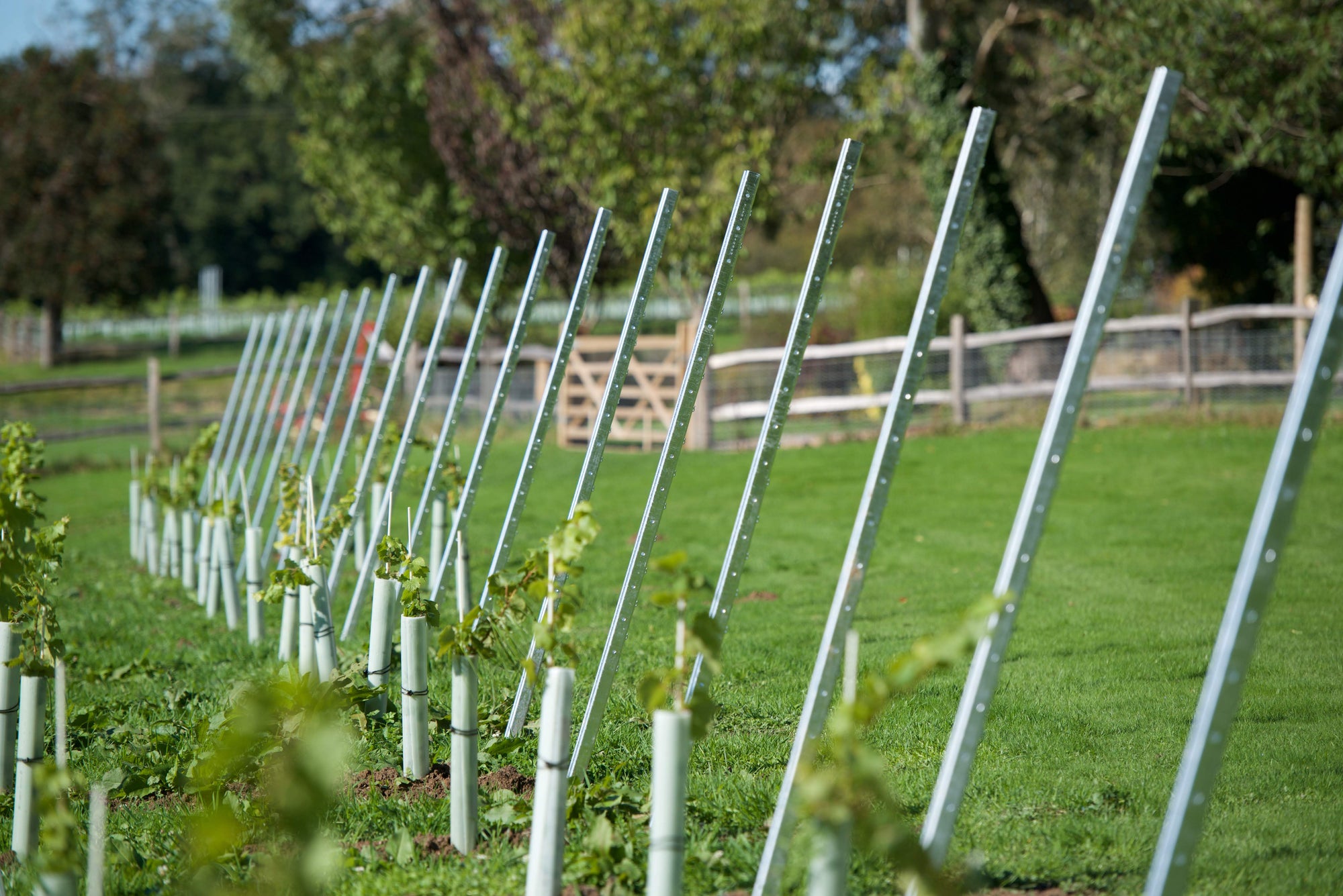

THE LIFE BELOW GROUND
When walking into a vineyard, it is often easy to predict whether, or not, the vines will be producing sustainable yields to be economically viable. Thick couch grass growing up into the vines, or the build-up of moss in the undervine, are indicators that the soils have been left to their own devices and are now oxygen-starved and depleted due to competition for nutrients.

Vineyards in the UK are more likely than not to be over soils containing a sizable proportion of clay, which can make conditions tough for vines. In contrast, vine growth would be best suited in forest floor soils where the upper metre has been broken up by root growth/death over millennia. Therefore, undervine soil cultivation is an important part of vineyard management. It helps keep weeds and other competing plants at bay and ensures that the soil is kept in optimal condition. This involves using various tools and techniques to work the soil undervine, such as roll hackes, under-vine disks, inter-vine weeding, and finger weeding. These activities help to loosen the soil, which allows for better water and air penetration. This promotes root growth and encourages microbial activity. In addition, in the row, soil cultivation with the likes of a sub-soiler and mole plough helps reduce compaction, which can lead to improved drainage and, as a result, an increase in soil fertility.
Increasing oxygen levels in the soil is an important part of undervine soil cultivation, as oxygen is essential for the growth and development of microorganisms that are important for healthy soil. This helps to promote microbial activity, which in turn helps to improve soil fertility. The soil microbial community is an important factor in vineyard productivity, and mycorrhizal fungi are essential to that community.
Mycorrhizal fungi are a type of beneficial fungi that form a symbiotic relationship with the roots of plants, including vines. The fungi form a network of filaments around the roots of the plant, which helps to increase the surface area of the root system. This increased surface area allows the plant to absorb more nutrients and water from the soil, improving the vines' health, productivity, and storage of carbon. The fungi also produce enzymes that help to break down organic matter in the soil, releasing essential nutrients that the plant can use. In addition, the fungi can help to protect the roots of the plant from disease and pests, as well as reduce the amount of water lost through evaporation. There is evidence that The networks of mycorrhizal strands, also referred to as mycelium, extend the capacity of the plant’s roots and connect plants to one another. Mycorrhizal fungi can also improve the quality of the grapes produced in vineyards, as they help to increase the availability of essential nutrients, such as nitrogen, phosphorus, and potassium, which can improve the flavour and aroma of the grapes.
Undervine soil cultivation is an important part of vineyard management, and it starts in the springtime when the soil is warmed up enough for the microbial activity to get going roughly at about T200. The T200 method calculates the average temperature for a given day by adding all temperatures (including negative temperatures, which are treated as 0) until the total reaches 200ºC. This begins on 1 January. However, don’t set foot in the vineyard with the tractor unless the ground is dry enough to allow cultivation without soil damage or compaction.
I once read the renowned French geologist Henri Enjalbert's book on a study of the great Bordeaux Chateaus. He mentions that the most important action in the year was getting the plough (décavaillonneuse) into the soil as soon as possible. This cultivation would kick start microbial activity encouraging the vines to bud burst earlier, giving them a longer growing season and riper grapes.



